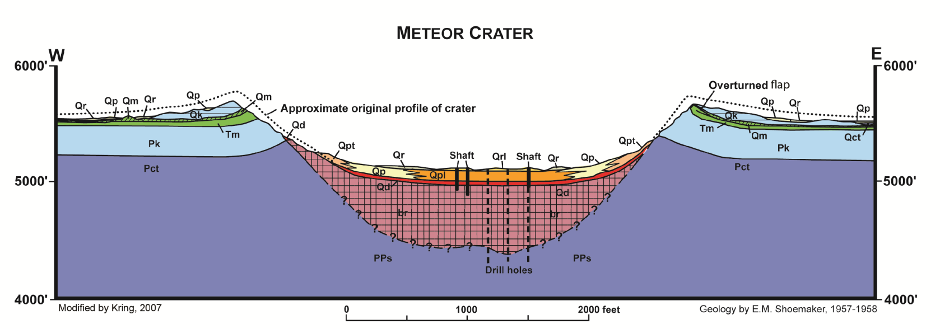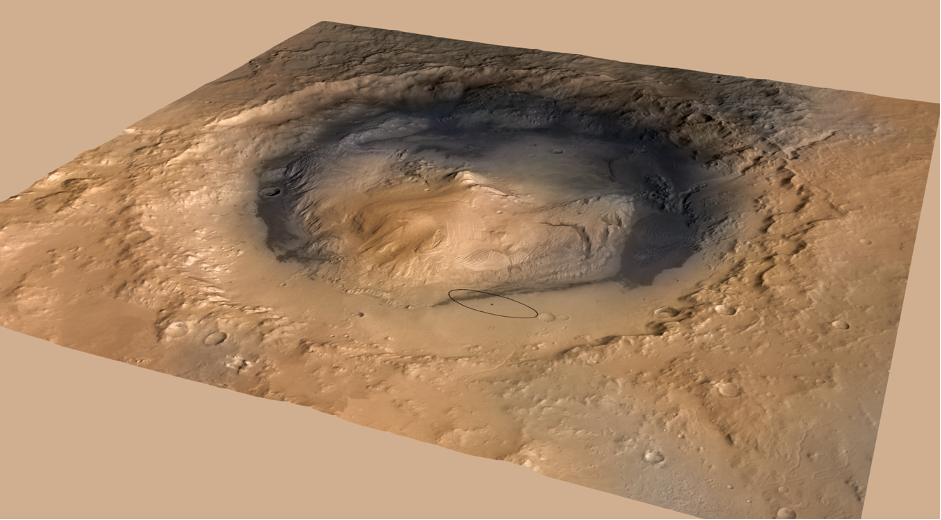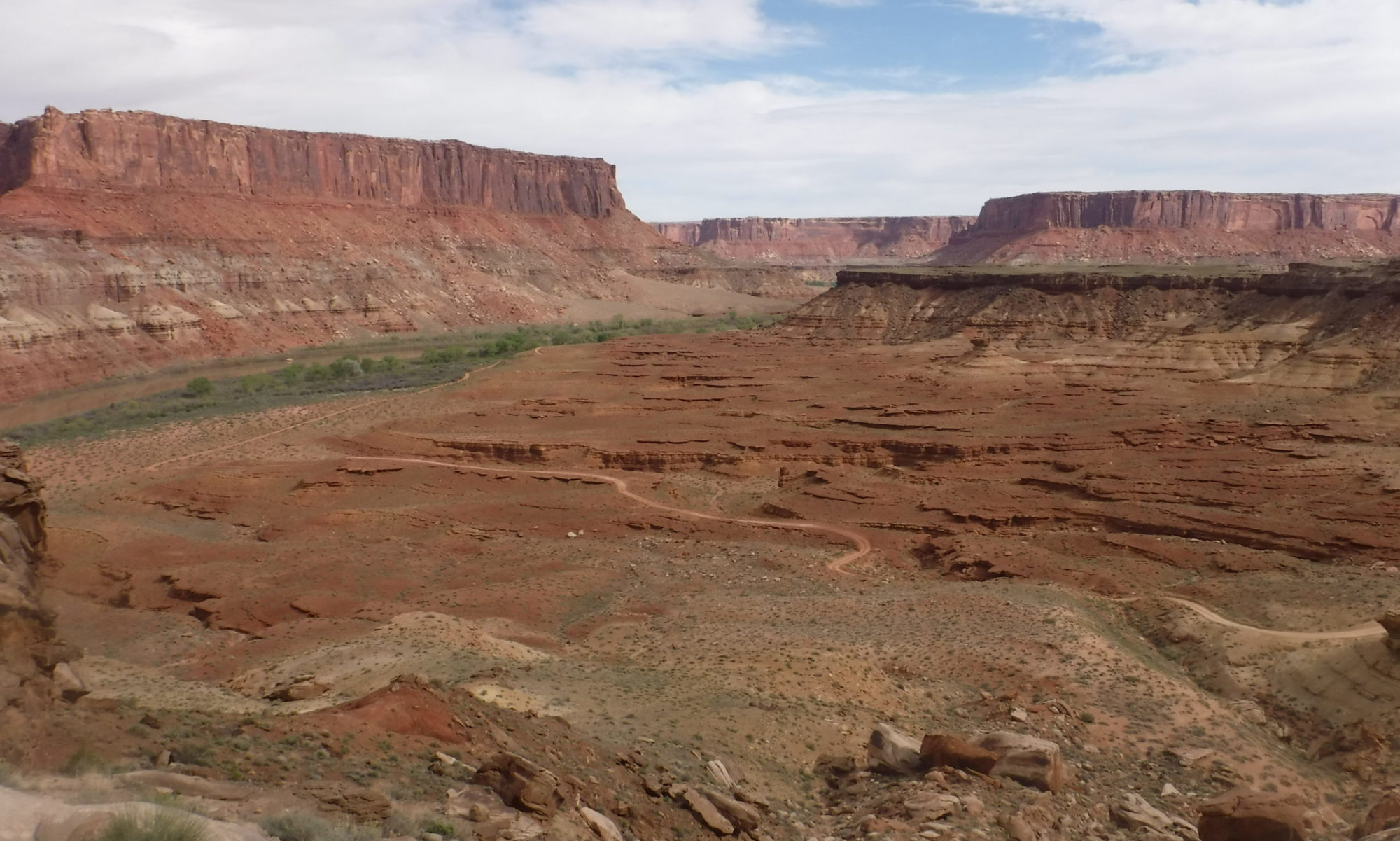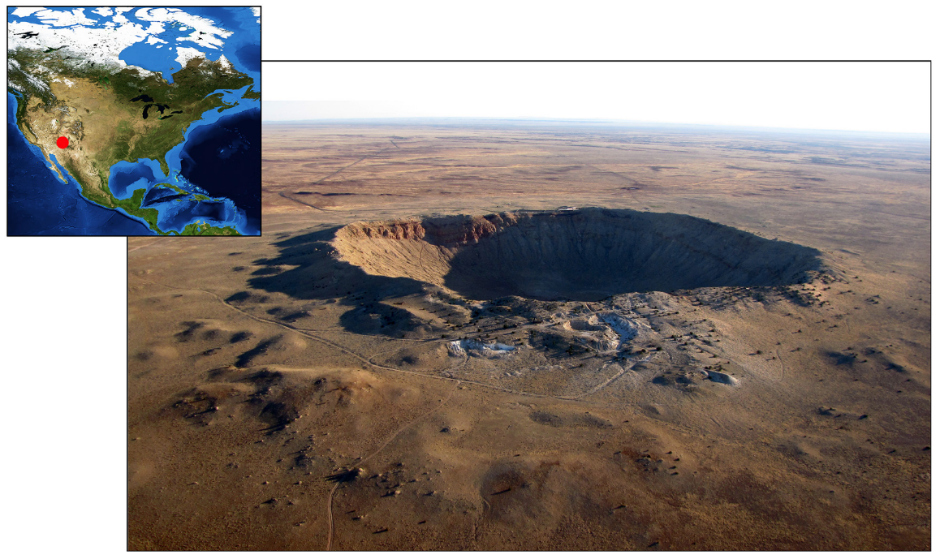Featured image: Meteor Crater, located in southwestern United States. Credit: David A. Kring (2017).
Author: David A. Kring
Impact cratering has been occurring throughout geological time. Earth’s best preserved impact crater lies in Arizona. Barringer Meteorite Crater – or Meteor Crater – formed when an iron meteorite impacted into northern Arizona ~50,000 years ago. Since then, the landscape has seen little erosion, creating a beautifully preserved impact crater. The site can be accessed by tourists only in restricted areas, but the wider crater can be used by select geologists and is used by NASA to train astronauts… and somehow, I found myself there alongside a group of PhD students from across the world.
In September 2022 I was lucky enough to participate in the Lunar and Planetary Institute (LPI) Field Training and Research Program at Meteor Crater. After nearly 24 hours of travelling ~8500 km, including a flight from London to Arizona, we drove north, up through Sedona National Park, away from the desert cacti and into forests teaming with pine trees so tall that they wouldn’t look out of place in ‘Twilight’. We arrived at Flagstaff, picked up our camping equipment, and headed east to our campsite, just 5 miles from Meteor Crater. Views of strikingly red sunsets through peaks of stratovolcanoes within the nearby San Francisco Volcanic Field were an unexpected bonus in the otherwise flat Colorado Plateau of northern Arizona.
Daily we donned backpacks overflowing with water bottles, and slathered ourselves in sunscreen to protect us from the desert heat and high-altitude sun. Driving towards the site of the impact, the rim was rising in front of us hiding the depth of the crater within. We had all been reading up about the impact crater for weeks prior to this trip, but were all unprepared for the majesty of standing on the rim of a crater and looking >1 km across to the cliffs at the other side of the crater, and ~200 m down to the crater floor, unable to process how large the boulders are on the floor until you were stood in their shadow a few hours later.
Most days we ventured into the crater, moving in pairs to safely descend the ~180 m cliffs to preserve the geology, and ourselves. On our way down we saw first-hand the power of the meteor strike as we descended through overturned sequences of geology mirroring the bedrock below. The energy of the impactor had swept the interior of the crater upwards and outwards, scattering it, and overturning it, across the surrounding plains forming a 30-60 m rim and an ejecta blanket spanning >1500 m radially out from the site of the impact. In its wake, a crater; telling the tale of the devastatingly beautiful moments of the impact through the geology including overturned ejecta, near vertical cliffs, and shock metamorphosed rocks.

The impressiveness of this geological feature is even further highlighted when one thinks about how common impact craters are on rocky planetary bodies in the solar system. Their presence is key to the exploration of other worlds; craters make fantastic landing sites due to their depth for further atmospheric drag and deceleration, and the exposure of the bedrock for geological exploration. Hiking around and into Meteor crater made me feel like I was an astronaut on Mars!
Meteor crater is a simple bowl crater; these craters are formed from impacts <2 km diameter in sedimentary rocks, and <4 km diameter in crystalline rocks. Any impacts larger than this form complex craters, with central peaks, extensive crater wall collapse, and possible deformation rings. On Mars, Curiosity rover is currently exploring Gale crater, a complex crater ~150 km diameter, that was once filled with a lake; impact craters may have been the places to house the genesis of extraterrestrial life.

However, craters get even larger than this! Hellas Basin is the largest impact crater on Mars at 2300 km in diameter, similar in size to the largest impact crater on the Moon, the South Pole-Aitken (SPA) basin. Impact craters have shaped planetary surfaces and histories; 66 million years ago, a huge impact killed the dinosaurs and caused a mass extinction of life on Earth paving the way for the evolution of mammals. In its early evolution, Mars’ North Polar Basin is thought to have been a massive impact may have resurfaced the northern half of the planet.
Impact cratering has been an important process in the evolution of planetary surfaces throughout geological time. Meteor crater is a rare terrestrial example of a common feature throughout the rocky bodies of the solar system. The study of this crater during fieldwork has allowed me to understand my own research of planetary surfaces in greater detail. To see what we got up to on our exciting fieldwork, check it out here!
A huge thank you to David Kring who safely navigated us around and into the crater, and whose knowledge and expertise has helped to shape the future career of a dozen more planetary scientists. A huge thank you is also extended to the Barringer Crater Company, Meteor Crater Enterprises, LPI, and NASA for funding this incredible, career-altering experience.
From Arizona to Mars: How Impact Craters Have Shaped the Solar System by Emma Harris is licensed under a Creative Commons Attribution-ShareAlike 4.0 International License.

